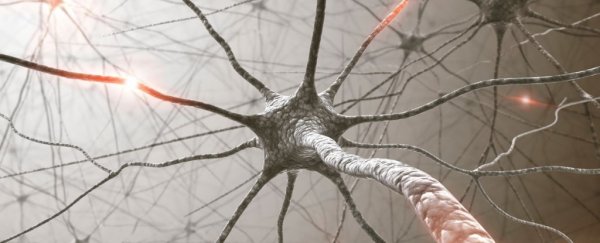A common HIV drug has been shown to improve the connections between memories in aging mice. The findings could help reveal how contextual events are remembered in the human brain, and why this becomes harder as we age.
The HIV drug, known as maraviroc, acts on a cellular protein known as CCR5, which sits on the surface of white blood cells. When the HIV virus connects with one of these receptors, it can enter the cell and replicate. But if maraviroc gets there first, it blocks the entrance.
And that's not all it does. In 2019, researchers working in mouse models found that maraviroc can also help neurons to make new connections following a stroke.
Now, another mouse study has cast more light on the workings of this drug, including its effects on cells involved in memory. When mice naturally age, researchers noticed the expression of CCR5 in the neurons of their hippocampus also increased.
The hippocampus is the brain's hub for memory formation, but a gradual increase in CCR5 expression makes it harder for neurons to link one memory to another based on context.
In fact, when researchers compared mice that expressed CCR5 and mice that didn't, they found the latter group were better at connecting memories that were separated by greater lengths of time.
The memories in this case were based on fear. The mice were taken from their home cage and placed in a new context (A). Later, they were taken to a different context (B). Two days after that, they were given a shock in context B. Another two days passed, and the animals were taken back to context A to see if they were prepared for a shock.
Importantly, some mice in the study were introduced to context A and context B within five hours of each other. Others were introduced to both contexts with a one, two, or seven day separation.
Among regular mice, the authors noticed high rates of freezing in context A, which is a sign of fear. But among mice with high expressions of CCR5, there was lower freezing overall.
None of the mice were able to link context A to context B as effectively when the introductions were separated by two or more days. Only when CCR5 was knocked out in some mice were the animals able to do so.
This temporal window, outlined by CCR5, probably exists so that not all memories in the brain link up. Some must be separated to maintain efficiency, which is probably CCR5's role in contextual learning: it helps us to forget unimportant information.
As a mammal ages, however, CCR5 gets a bit out of control, and at some point, even contexts that are closely related are no longer remembered that way.
Among older mice, the inability to connect context A with context B was reversed with the drug maraviroc. The effects were similar to what was found in mice that had CCR5 completely knocked out.
"Unlike control mice, maraviroc-treated mice showed memory linking," the authors write.
"Thus, blocking CCR5 with maraviroc ameliorates the memory linking deficits in middle-aged mice. Altogether these results suggest that CCR5 expression has a role in closing the temporal window for memory linking as well as in age-related deficits in memory linking."
If these insights apply to humans, then CCR5 could be a useful drug target for those with problems grouping memories.
The authors are now organizing a clinical trial to test maraviroc's influence on early memory loss in humans.
"Once we fully understand how memory declines, we'll possess the potential to slow down the process,'" says neurobiologist and psychiatrist Alcino Silva from the University of California Los Angeles.
The study was published in Nature.
